Syn.: Didierea mirabilis Baill.
Family: Didiereaceae Radlk.
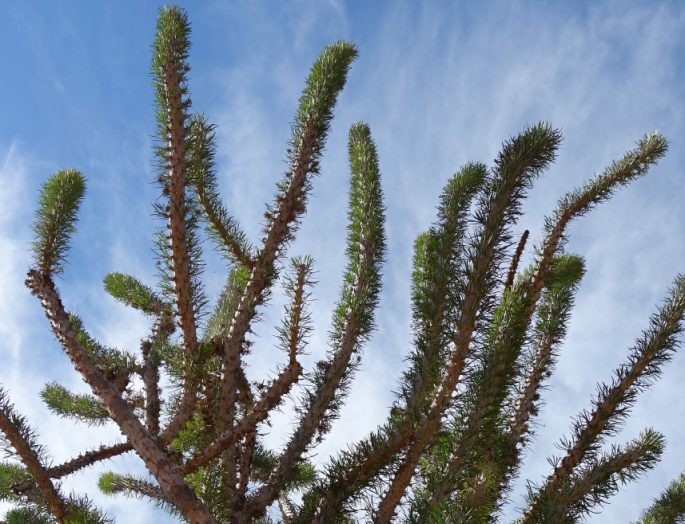
Distribution: Species endemic to Madagascar, found in the southwestern part of the island, in the province of Toliara. The genus includes only two species, both occurring in the southern part of Madagascar.
Ecology: It grows in spiny dry forest of southern Madagascar, with species Adansonia rubrostipa, Bauhinia grandidieri, Chadsia grevei, Combretum grandidieri, Delonix decaryi, Euphorbia tirucalli, Jatropha mahafalensis, etc. It grows also in areas disturbed by humans, at elevations up to 500 m asl.
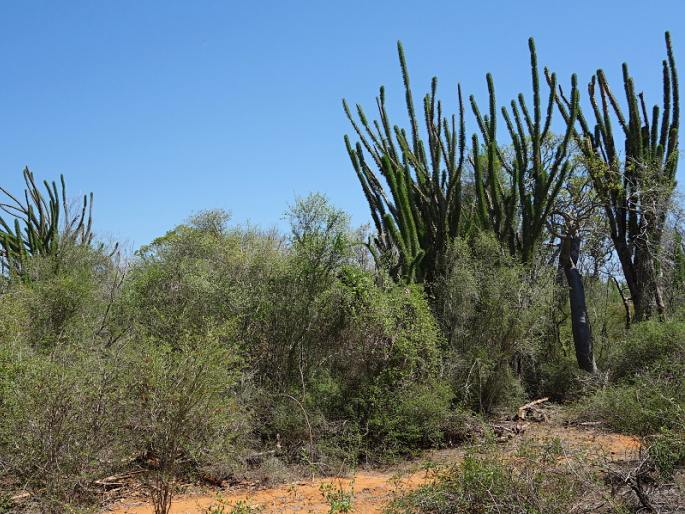
Description: Deciduous, dioecious shrub or tree with very characteristic habitus, 4–6 m tall. Trunk erect, slender, no more than 50 cm in diameter, sparsely branched, thorny. The leaves grow in clusters on the trunks, linear, 5–10 cm long and 3–5 mm wide, slightly succulent, thorns 4–8(–12), up to 10 cm long. The unisexual flowers grow on top of the branches in clusters among the thorns, floral zone up to several meters long, corolla tetramerous, whitish to yellowish. The fruit is 3–5 mm long.
Threat and protection: This species is protected by CITES agreement.
Note: Until recently, the family Didiereaceae was regarded as endemic to Madagascar (4 genera and about 11 species). Recently, south African genus Portulacaria was added to this family. As a result Didieraceae as a family only lost its endemic status.
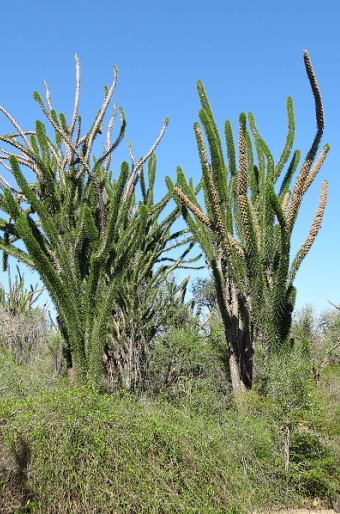
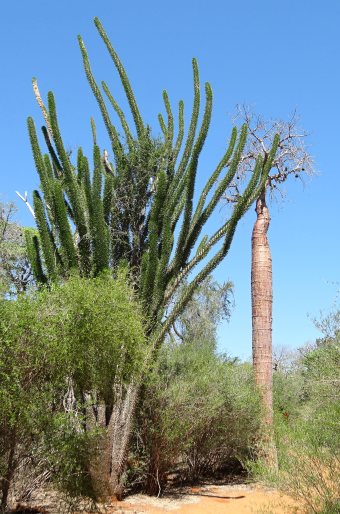
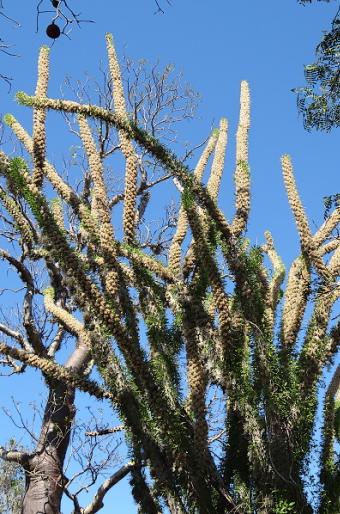
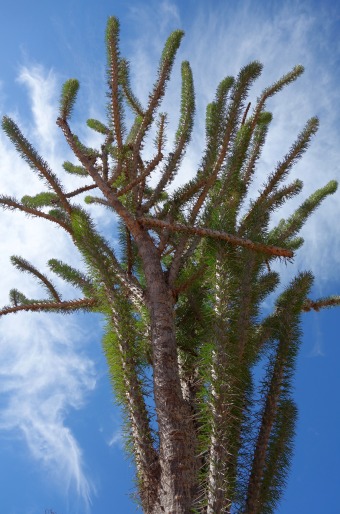
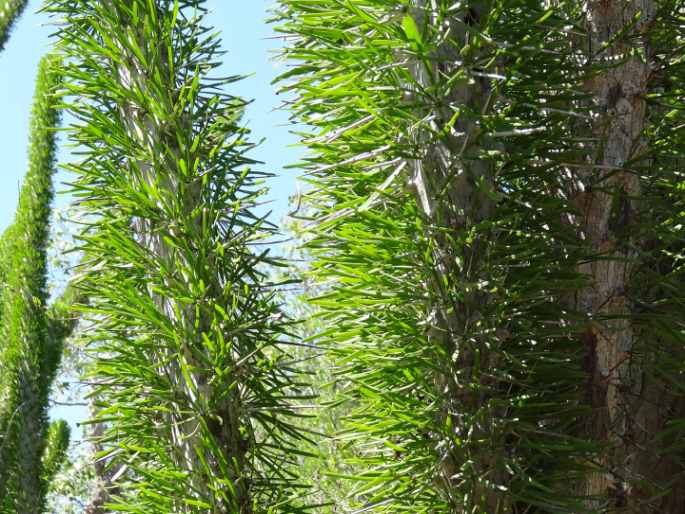
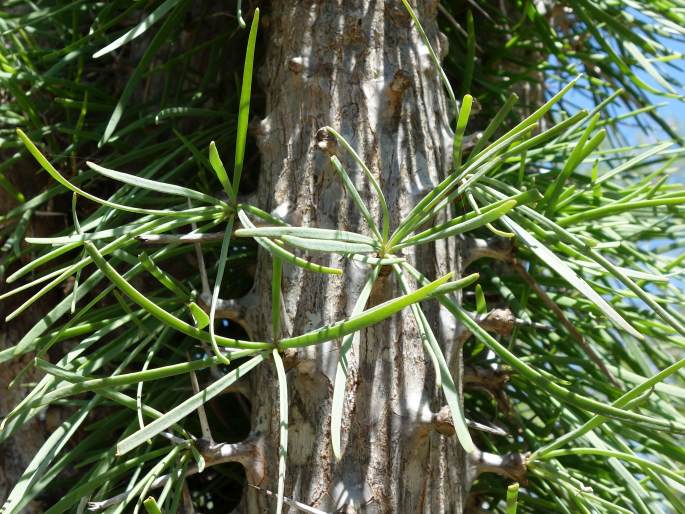
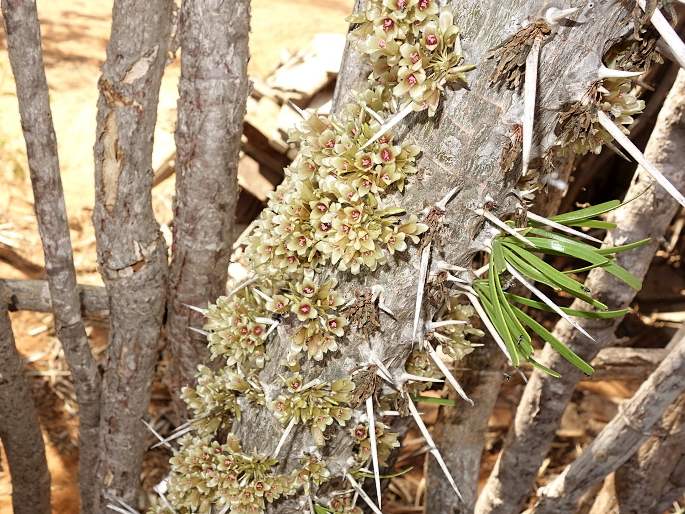
These images were taken in Madagascar, Toliara, Ifaty, Parc Mosa (by Ljuba Procházková, November 3, 2014).


